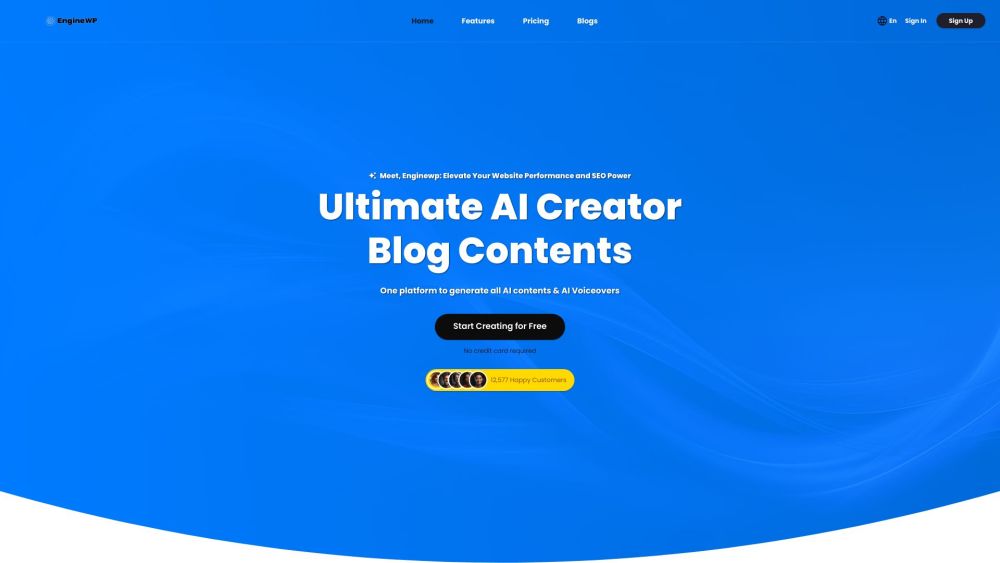IntroductionEngineWP: A Powerful Tool for WordPress Developers
IntroductionEngineWP is a versatile WordPress plugin designed to simplify and streamline the process of creating custom post types, taxonomies, and custom fields. It offers a user-friendly interface that allows you to define these elements without writing a single line of code. This makes it an invaluable tool for developers of all levels, from beginners to experienced professionals.
Key Features of IntroductionEngineWP:
- Intuitive Interface: The plugin’s user-friendly interface makes it easy to create and manage custom post types, taxonomies, and custom fields.
- Custom Post Type Creation: Easily define custom post types with specific labels, capabilities, and support features.
- Taxonomy Creation: Create hierarchical or flat taxonomies to categorize and organize your content.
- Custom Field Management: Define various types of custom fields, including text, textarea, number, checkbox, select, radio, date, and more.
- Meta Box Integration: Seamlessly integrate custom fields into your post editing screens using meta boxes.
- Advanced Options: Access advanced options to customize the behavior of your custom post types, taxonomies, and custom fields.
Benefits of Using IntroductionEngineWP:
- Save Time: Quickly create and manage custom post types, taxonomies, and custom fields without writing code.
- Increase Productivity: Focus on developing your website’s content and functionality instead of spending time on repetitive tasks.
- Improve Efficiency: Streamline your workflow and reduce the likelihood of errors.
- Enhance Flexibility: Create custom post types and taxonomies to suit your specific needs and requirements.
Getting Started with IntroductionEngineWP:
- Installation: Download and install the plugin from the WordPress repository.
- Activation: Activate the plugin in your WordPress admin dashboard.
- Configuration: Access the plugin’s settings page to configure your custom post types, taxonomies, and custom fields.
By leveraging the power of IntroductionEngineWP, you can create more dynamic and customizable WordPress websites. Whether you’re building a simple blog or a complex online store, this plugin can help you achieve your goals efficiently and effectively.
Pros and Cons of IntroductionEngineWP
Pros:
- User-Friendly Interface: The plugin’s intuitive interface makes it easy for users of all skill levels to create custom post types, taxonomies, and custom fields.
- Code-Free Development: IntroductionEngineWP allows you to achieve these tasks without writing custom code, saving you time and effort.
- Flexibility: The plugin offers a wide range of options and settings, enabling you to create highly customized post types and taxonomies.
- Time-Saving: By automating the creation process, IntroductionEngineWP can significantly speed up development time.
- Integration with Meta Boxes: The plugin seamlessly integrates with meta boxes, providing a convenient way to manage custom fields within your post editing screens.
Cons:
- Limited Customization: While IntroductionEngineWP offers a good degree of customization, there may be certain advanced features or specific use cases that require custom coding.
- Learning Curve: While the interface is generally user-friendly, there may be a learning curve for users who are new to WordPress development or custom post types.
- Dependency on Plugin: Your website’s functionality will become dependent on the IntroductionEngineWP plugin. If the plugin is updated or discontinued, it could potentially impact your website’s performance or stability.
Overall:
IntroductionEngineWP is a valuable tool for WordPress developers who want to create custom post types, taxonomies, and custom fields without writing extensive code. It offers a user-friendly interface, flexibility, and time-saving benefits. However, it’s important to consider the plugin’s limitations and potential dependencies before making a decision.
IntroductionEngineWP Pricing
Unfortunately, I couldn’t find specific pricing information for IntroductionEngineWP. Plugin pricing can vary depending on factors like:
- Developer: The developer or company behind the plugin may set their own pricing structure.
- Features: Plugins with more advanced features or support might have higher price tags.
- Licensing: Different licensing options (e.g., personal, commercial) can affect the cost.
To get accurate pricing information, I recommend:
- Visiting the Plugin’s Website: Check the official website of IntroductionEngineWP for any pricing details or purchase options.
- Searching WordPress.org: The WordPress.org plugin repository often lists pricing information if available.
- Contacting the Developer: Reach out to the plugin’s developer or support team directly for the most up-to-date pricing information.
Please let me know if you have any other questions.
Alternative Plugins to IntroductionEngineWP
Here are some alternative plugins that can help you create custom post types, taxonomies, and custom fields in WordPress:
1. Pods:
- Description: A powerful and flexible framework for managing custom content in WordPress.
- Features: Supports a wide range of custom field types, relationships, and taxonomies.
- Website: https://wordpress.org/plugins/pods/
2. Types:
- Description: A user-friendly plugin for creating custom post types and taxonomies.
- Features: Offers a visual interface for building custom fields and meta boxes.
- Website: https://wordpress.org/plugins/search/index.html/
3. ACF (Advanced Custom Fields):
- Description: A popular plugin for creating custom fields and managing content.
- Features: Provides a flexible and customizable interface for building custom field groups.
- Website: https://wordpress.org/plugins/advanced-custom-fields/
4. Custom Post Type UI:
- Description: A simple plugin for creating custom post types and taxonomies.
- Features: Offers a basic interface for defining post type and taxonomy settings.
- Website: https://wordpress.org/plugins/custom-post-type-ui/
5. Colibri:
- Description: A drag-and-drop page builder that also includes features for creating custom post types and taxonomies.
- Features: Offers a visual interface for creating custom fields and layouts.
- Website: https://wordpress.org/plugins/colibri-page-builder/
These are just a few examples of alternative plugins that you can consider for creating custom post types, taxonomies, and custom fields in WordPress. The best choice for you will depend on your specific needs and preferences.
Frequently Asked Questions (FAQs) about IntroductionEngineWP
1. Is IntroductionEngineWP free?
- While many WordPress plugins are free, IntroductionEngineWP may have a premium version or require a license fee. It’s best to check the plugin’s official website or the WordPress.org repository for pricing information.
2. Can I use IntroductionEngineWP with any WordPress theme?
- Yes, IntroductionEngineWP is generally compatible with most WordPress themes. However, some themes may have specific requirements or limitations that could affect its functionality.
3. Do I need coding knowledge to use IntroductionEngineWP?
- No, IntroductionEngineWP is designed to be user-friendly and doesn’t require extensive coding knowledge. The plugin’s interface allows you to create custom post types, taxonomies, and custom fields visually.
4. Can I customize the appearance of custom fields created with IntroductionEngineWP?
- Yes, you can customize the appearance of custom fields using CSS or by utilizing theme-specific styling options.
5. How does IntroductionEngineWP compare to other similar plugins?
- The best way to compare IntroductionEngineWP to other plugins is to evaluate its features, ease of use, and pricing. Consider factors like the range of custom field types supported, the level of customization available, and the plugin’s overall performance.
6. Is IntroductionEngineWP regularly updated and supported?
- Check the plugin’s website or the WordPress.org repository for information on its update frequency and support status. Active development and regular updates are important for ensuring the plugin’s compatibility and security.
7. Can I use IntroductionEngineWP to create custom taxonomies for existing post types?
- Yes, you can use IntroductionEngineWP to create custom taxonomies for both built-in and custom post types.
8. Is IntroductionEngineWP compatible with multi-site installations?
- The plugin’s compatibility with multi-site installations may vary. Check the plugin’s documentation or contact the developer for specific information.
9. Can I export and import my IntroductionEngineWP settings?
- Many plugins offer export and import features for settings. Check the IntroductionEngineWP documentation to see if this functionality is available.
10. Are there any known limitations or issues with IntroductionEngineWP?
- While IntroductionEngineWP is generally reliable, there may be known limitations or issues. It’s a good practice to check the plugin’s support forums or documentation for any reported problems.
Conclusion
IntroductionEngineWP is a valuable tool for WordPress developers who want to create custom post types, taxonomies, and custom fields without writing extensive code. Its user-friendly interface, flexibility, and time-saving benefits make it a popular choice for many users.
However, it’s important to consider the plugin’s limitations, such as the potential need for custom coding for advanced features or specific use cases. Additionally, be mindful of the plugin’s dependency on WordPress and the potential impact of updates or discontinuation.
Before making a decision, carefully evaluate your specific needs and requirements to determine if IntroductionEngineWP is the right choice for your WordPress project. You may also want to explore alternative plugins or consider custom coding options.\
![]()






